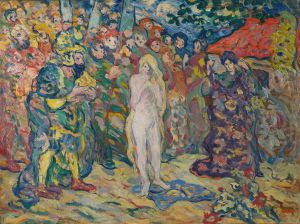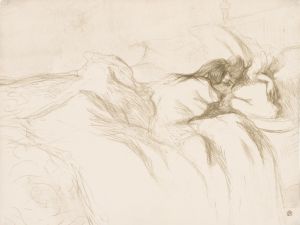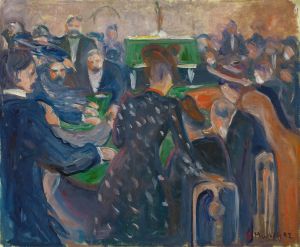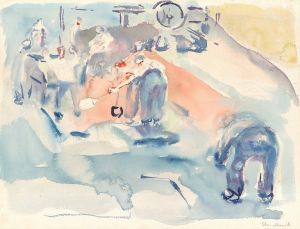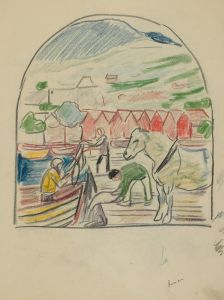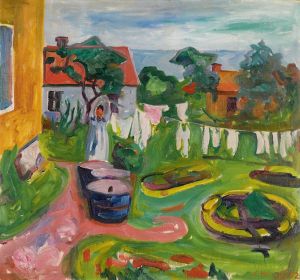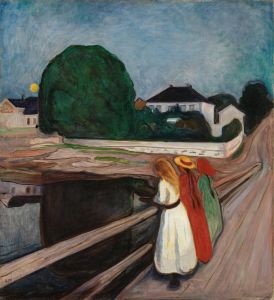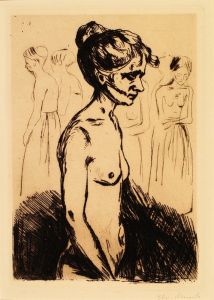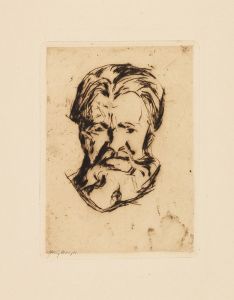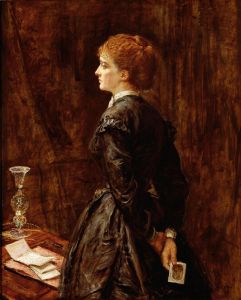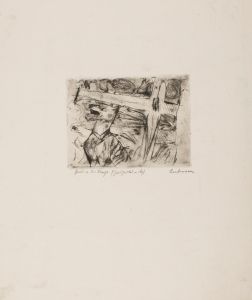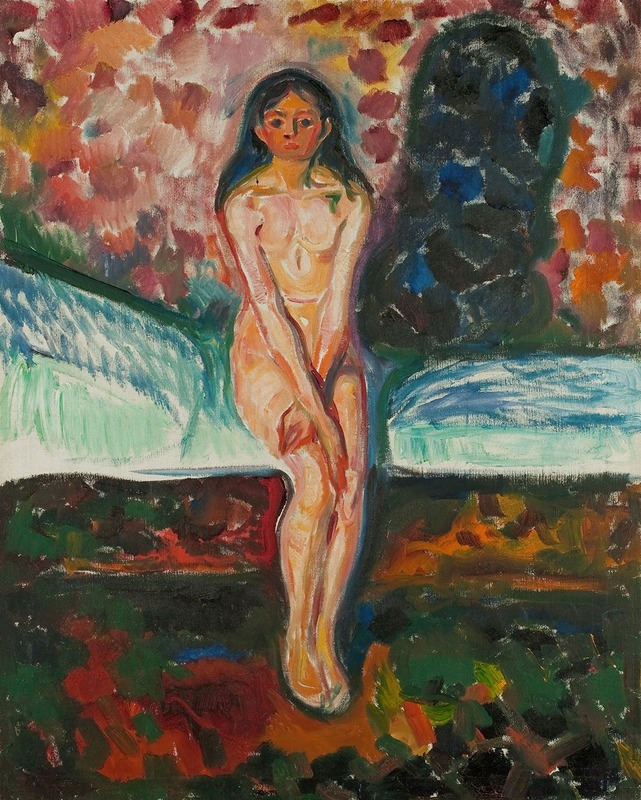
Puberty
A hand-painted replica of Edvard Munch’s masterpiece Puberty, meticulously crafted by professional artists to capture the true essence of the original. Each piece is created with museum-quality canvas and rare mineral pigments, carefully painted by experienced artists with delicate brushstrokes and rich, layered colors to perfectly recreate the texture of the original artwork. Unlike machine-printed reproductions, this hand-painted version brings the painting to life, infused with the artist’s emotions and skill in every stroke. Whether for personal collection or home decoration, it instantly elevates the artistic atmosphere of any space.
"Puberty" is a painting created by Norwegian artist Edvard Munch in 1894–1895. It is one of Munch's significant works and reflects his exploration of themes related to human emotion, psychological tension, and existential anxiety. The painting depicts a young girl sitting on the edge of a bed, nude, with her arms crossed over her body in a gesture of modesty or self-protection. Her gaze is direct, yet her expression conveys a sense of vulnerability and unease. A shadow looms behind her, adding an element of mystery and psychological depth to the composition.
The work is often associated with Munch's broader interest in themes of adolescence, sexuality, and the transition from childhood to adulthood. These themes were central to his artistic exploration during the 1890s, a period when he created many of his most iconic works, including "The Scream" and "Madonna." "Puberty" is part of this broader body of work that delves into the complexities of human emotion and the struggles of identity and self-awareness.
The painting is executed in oil on canvas and is characterized by Munch's distinctive style, which combines expressive brushwork with a focus on emotional resonance rather than strict realism. The stark composition and the interplay of light and shadow contribute to the painting's haunting and introspective atmosphere.
"Puberty" is housed in the collection of the National Museum of Art, Architecture and Design in Oslo, Norway. It remains an important example of Munch's contribution to modern art and his ability to convey profound psychological and emotional states through his work.





